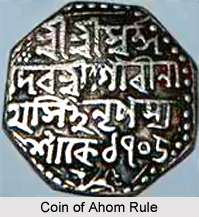 History of Dhemaji District is quite old and recollects some major chronological changes behind the formation of this district of Assam. It is believed that in around 1240 A.D. the first King of Ahom reign, Chow Chukafa founded his capital at a place named Haboong in the Dhemaji District. But, due to constant flood in the area the King shifted his capital from Haboong and after that the area was ruled by the Chutia kings and it continued from 1223 AD to 1523 A.D. Further, during 1523 A.D Ahom King Chuhung - Moong attacked and kill the Chutia king Natipal and as a result the area again was captured and it came under the kingdom of Ahoms.
History of Dhemaji District is quite old and recollects some major chronological changes behind the formation of this district of Assam. It is believed that in around 1240 A.D. the first King of Ahom reign, Chow Chukafa founded his capital at a place named Haboong in the Dhemaji District. But, due to constant flood in the area the King shifted his capital from Haboong and after that the area was ruled by the Chutia kings and it continued from 1223 AD to 1523 A.D. Further, during 1523 A.D Ahom King Chuhung - Moong attacked and kill the Chutia king Natipal and as a result the area again was captured and it came under the kingdom of Ahoms.
According to the historical accounts, several indigenous tribal groups resided in the entire area of the Dhemaji district. The main tribes were tribes Mishing, Sonowal Kachari, Bodo Tribe, Deori and Laloong. Moreover, different tribes like Ahom, Rabha Tribe, Tai - Khamti, Konch, Keot, Koiborta, etc. migrated during several periods in the past. History of Dhemaji District also states that there are a number of mythological and hypothetical beliefs associated with the origin of the name `Dhemaji`. One of the most popular beliefs say that there was a river which used to change its course very frequently and resulted unanticipated flood affecting different parts of the region. Hence the river was believed to be a kind of evil spirit. The Assamese version of the words flood and playing are `Dhal` and `Dhemali` respectively and therefore the area where flood is a perennial phenomenon may be called as a playground for flood. Interestingly, in Assamese Language it came to be known as `Dhal Dhemali`. With the passage of time, the term `Dhal` was omitted and the term `Dhemali` started to be pronounced as `Dhemaji`.
Initially, the present geographical area of Dhemaji District was a part of the then Lakhimpur District of the state with its headquarters at Dibrugarh. In the year 1971, Dhemaji was declared as a sub-division, including Jonai Bazar and Dhakuakhana. Thus, finally, in the year 1989, Dhemaji was declared as an independent district of Assam covering Jonai Bazar and Dhemaji (Sadar) sub-divisions.






